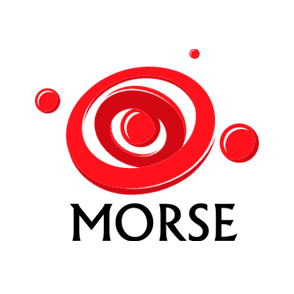Tecrail
Tecrail: LTE Communications Technologies for the Automated Driving and Control Railway.
The main aim of the TECRAIL Project lies in determining the adaptive feasibility of the LTE (LONG TERM EVOLUTION) and IP CONVERGENCE systems for railway environments, so that they may be applicable to railway signaling, automatic driving, on-board communications and train-ground communications, with the aim of contributing to their standardization and development.
The spectacular increase in 3G devices and smart phones has meant that volumes of broadband data are increasing exponentially and all the indicators predict that an explosion in the demand for this type of traffic will take place in the coming years.
As a result, the 3G networks are beginning to show limitations in their performance and capacity to support the new applications needed by the market, both due to the volume of data and the functional features that they require.
LTE has been adopted by the 3GPP (3rd Generation Partnership Project) to respond to the needs of the next generation mobile networks and it is the reference technology for the development of the current networks.
These networks offer:
• Higher speed for mobile applications, which is reflected in the faster down- and uploading of Web pages, videos, music and photos
• Higher video quality, both in definition and speed
• Use of several mobile applications at the same time
• Faster response time, which is reflected in enhanced interactivity
Similarly, in the railway environment efficient infrastructure and rolling stock operation and management increasingly require intelligent real-time information integration in the operating and decision processes. In addition, passengers require high-quality in-journey services. All this results in a significant increase in the needs for communication between the train in movement and the on-track systems.
Application of the new generation of LTE mobiles and IP convergence both for critical mission and general public performance in the railway environment responds to this need. This means that the railway industry is now beginning to consider how this technology may be applied.
These technologies are not amenable to direct transfer to the railway environment, which has specific features which make definition of adaptations in the technologies necessary. Amongst these security is the prime consideration. Adaptation of LTE technology to the railway environment has to be similar to that of GSM-R technology, which arose as a development of the public GSM system, to which improvements, functionalities and value-added services were added for the railway sector.
Public LTE technology is already available on an experimental basis; a similar standardization, development and testing evolution is proposed over the next 10 years so that an LTE-R technology may be available towards 2010 that may be applied to the railway. This system will not replace GSM-R immediately, but rather they will both co-exist for a lengthy period of time and their functionalities will be complementary in two aspects:
• Improvement in operating aids
• Advanced signalling systems: automatic driving
This Project sets out to study these problems, analyzing the situations and technologies, and working on the development of new concepts that will assure the mutual utilization of communications technologies and railway environment in the optimum solution to the new challenges, both for interurban and conventional scenarios and for high speed, in the most integrated manner possible. The aim of all this is to provide train-control centre communications with the quality required not only by the new control and safety needs but also in automatic driving.
The Project is therefore structured as a technological development proposal that would comprise both the LTE-R system standardization and development stages. For this purpose the intention is to encompass the whole value chain of the train-ground communications applications, in all aspects of interest for the companies of the sponsoring consortium, which are:
a) Multiservice LTE communications around LTE-R as an evolution of GSM-R/TETRA
b) IP Convergence in communications in the railway environment
c) Multi-environment IP broadband train-ground communication, from suburban to high speed
All these technologies are represented both from the rail operator’s (ADIF and Metro de Madrid) standpoint, but also from that of the technology development manufacturers (Alcatel-Lucent) and of the testing laboratories and developers of measurement solutions (AT4 wireless). The know-how of an investigatory nature is supplied in this case by the research groups belonging to the Polytechnic University of Madrid, the University of A Coruña and the University of Malaga.
It is important to underline the fact that the Project will include field tests in a real track environment with train on-board equipment that will enable the actual application of the conclusions to be shown. For this purpose, use will be made both of Metro de Madrid facilities and the new ADIF facilities at the Malaga Railway Technology Centre, which will allow the results to be analysed both in interurban environments and conventional and high-speed railways.
Financial Entity:
Spanish MINECO
Role:
Participant
Date:
01/10/2011 - 31/12/2014
Web:
Website
